
views
Preparing For Your Kitten's Arrival

Kitten proof your home. Set your home up to make it kitten friendly and kitten proof before you even bring the cat into your home. Do a walk through your home looking for potential hazards for your kitten keeping these things in mind: Bathrooms can be hazardous places for adventuresome kittens. Keep cleaning supplies locked up and toilet lids down. Dental floss, rubber bands, hair ties and any string like material needs to be stashed away from curious kittens—they can ingest these and cause life threatening intestinal problems. Kitchen cleaning supplies need to be kept out of reach of kittens. Plastic six pack beverage holders and plastic bags need to be discarded properly as kittens can get tangled and injured in these things. Keep sewing supplies locked away including needles, pins and thread/yarn. Kittens can and will play with these hazardous things which can kill them if ingested. Keep houseplants away from kittens, as some of them can be toxic. If you aren’t sure if your plant is or isn’t look on-line. Kids toys made of soft material (foam, rubber) are kitty magnets—they can chew and ingest small bits leading to serious stomach issues. Human medication should always be kept safely out of reach. Electric cords are fun for kittens to chew on; not so fun on their health with the chance for electrocution if it is bit through to the wires. Windows make fun spots for the kitten to look out. Make sure you have sturdy screens or keep the windows closed tight. Blind or curtain strings and ties can strangle a kitten if it gets caught up on them. Shorten them or remove them. Put any toxic items, such bleach, rat or mice bait, lye, etc., locked away where a kitten cannot get into them and bit at the packaging. Kittens love to crawl into tiny spots—look around and see if there are any dangerous spots (crawl spaces, spaces around pipes running into or out of house, sump pump holes) and block them if possible.

Bring familiar smells into your home. Ask the previous owner if you can take a blanket or stuffed toy that the kitten and mother have used so that the kitten will have something to cuddle in or with that would have it’s mother scent on it. You can also use Feliway a product with pheromones--chemicals that cat’s produce to communicate with and calm other cats. This comes in various forms such as a spray, wipes, collar or a diffuser.
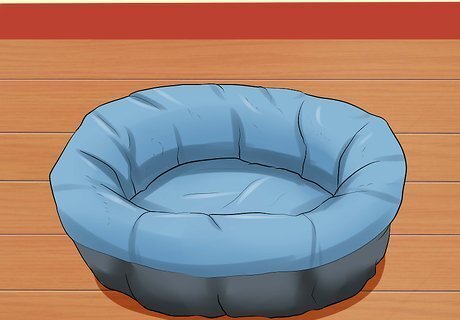
Get your kitten a bed. Grab a small cardboard box cut the top off, and stick a warm, cozy blanket in there. Alternately, buy a small cat basket with a nice cozy pad.
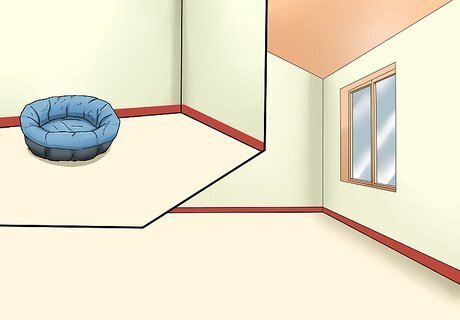
Put the kitten's bed in a room out of the way of household traffic and that will be reasonably quiet. The kitchen or living room are usually good rooms. Your kitten will need a safe spot to retreat in case the hustle and bustle of the house gets to be too much. Before you get the kitten, think where you are going to put its bed. Do not make it sleep on your bed for the first month because it isn't quite used to you yet and it will be uncomfortable, or it might fall off.
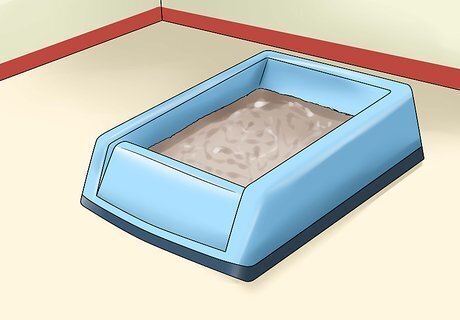
Get a kitten litter box. The litter box should have very short sides (around 2-3 inches). Your kitten will need this short litter box until it is about 3-4 months old or when it is tall enough to graduate to a full sized litter box. Place a layer of litter, whatever brand you choose, in the bottom of the box. You may want to use a rug, newspaper, or a bed protector pad under the box to catch any litter that sticks to the kitten’s paws.

Place the kitten's food and water bowl near its basket, but away from the litter box. Cats and kittens don’t like to eat near their bathroom any more than a human does. Make sure the food you are feeding her is a kitten food, not an adult cat food as they are rapidly growing and need more calorie and nutrient dense food than adult cats. The litter box should be placed near the basket for now. As the kitten gets used to the home, it can be gradually moved to a more preferred location for you but for now a tiny kitten needs easy access to her box.
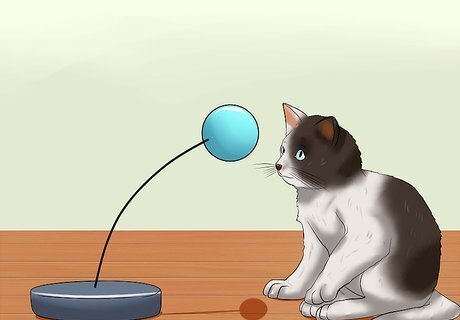
Pick up a few toys designed for cats and kittens. Small fur toy mice and feather wands are favorites of most cats. Catnip will not be needed for a young kitten as they don’t develop a response to it until they are much older.
Introducing Your Kitten to its New Home
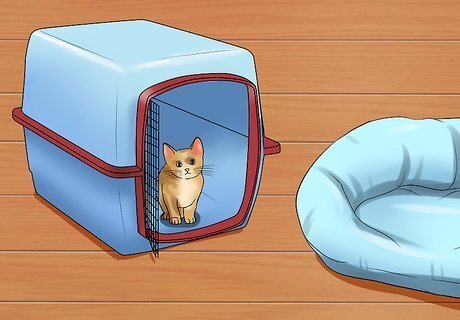
Place the kitten near its bed. Do not pull the kitten out of the cat carrier right away; leave it in there with the door open and allow it to exit the carrier at its own pace. Make sure it sees its food and water bowl. This may motivate the kitten to leave its carrier and explore. When the kitten does come out, gently pick it up and place it in the litter box to give it an opportunity to go to the bathroom. If the kitten doesn’t go, at least it will know there is a litter box for it use.
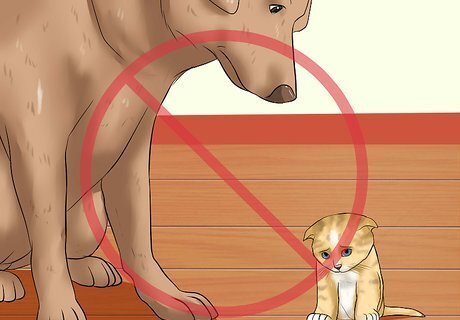
Keep the kitten away from other pets at first. If you have other pets in the house, keep the kitten in its own room (along with litter box, bed, food and water) for a week before introducing him to the other pets. If you have small children, instruct them to be very gentle when they pick up, hold, or play with the kitten to avoid injury to either the kitten or kid.
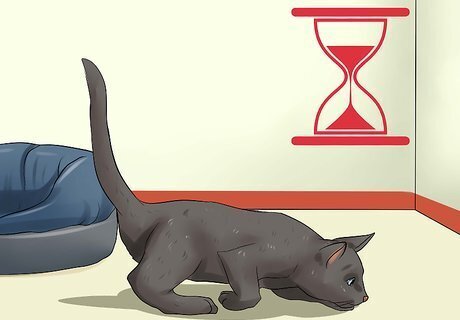
Give your kitten time to adjust to its new home. Just let it take its time and it will get used to you and the house soon. Keep the kitten in one room (unless you are there to watch carefully) and other pets away from the kitten for a week before introducing the cat to the other pets. After a while, try playing with the kitten but don't force it to do anything it doesn't want to do. It should come out soon enough, and don't panic if it comes out of the pet carrier and hides under something. Let the kitten explore the room. It will have a lot of sniffing to do.

Place the kitten in the litter box every couple of hours until it uses it. Kittens are pretty smart and will take to using the litter box in no time. That is, as long as they can get into it, it’s cleaned daily (scooped), and it’s in a quiet spot.




















Comments
0 comment